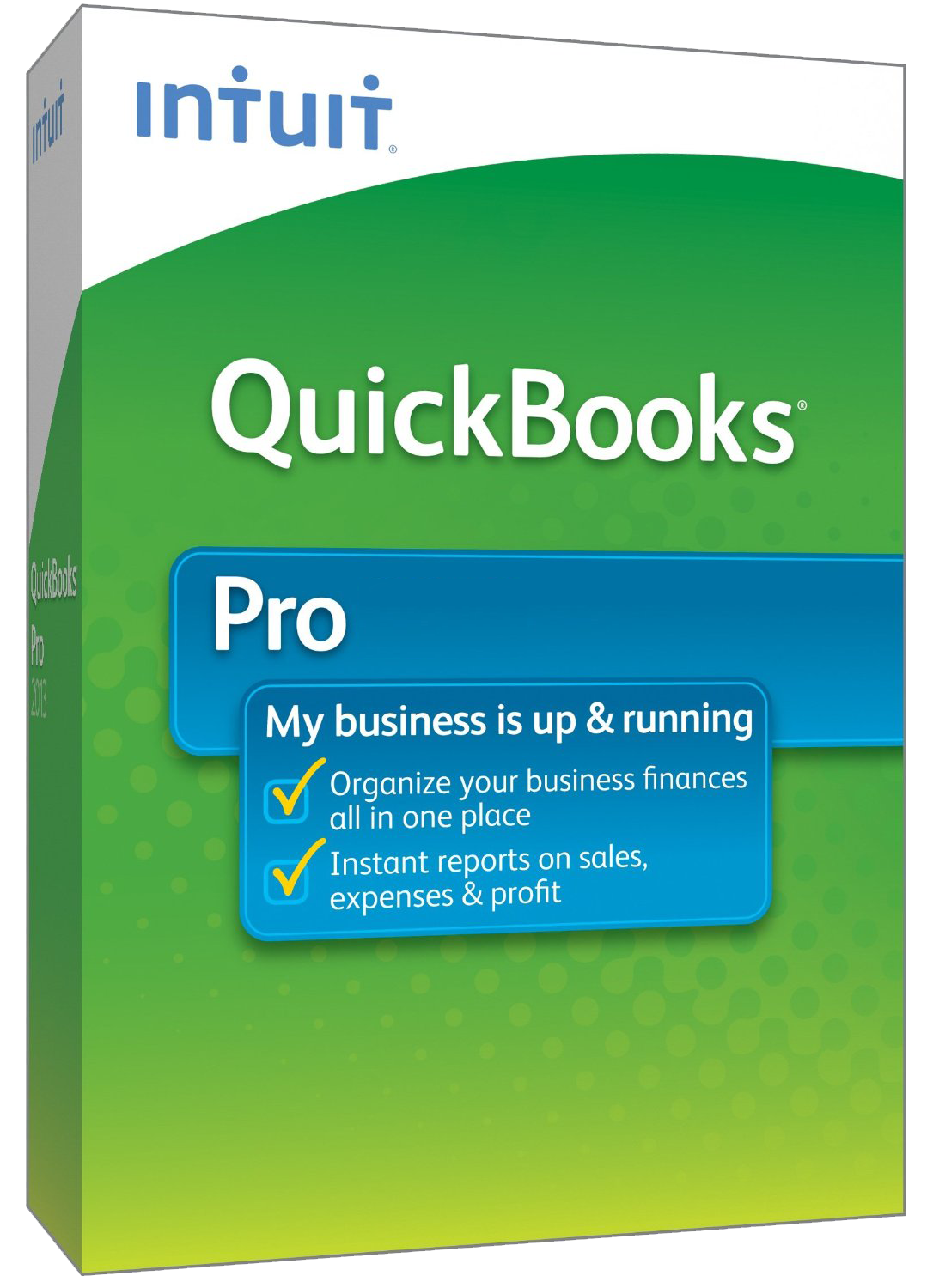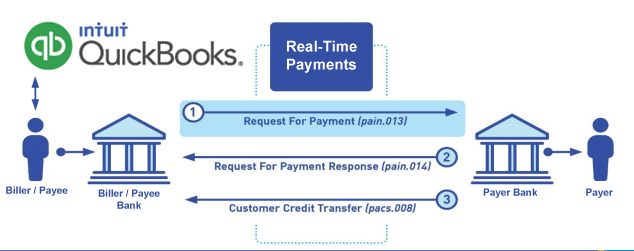QuickBooks® Create Real-Time Payments File Invoicing
The Best Solution for Create Real-Time Payments File in QuickBooks®
Today Payments is an Authorized Developer of Intuit offering a highly robust app that supports both QuickBooks’ desktop and online customers, provide merchants with the tools they need so they can focus more time on their customers and businesses, and less time on data entry.
"Our Integrated payment solutions can save a typical small business owner more than 180 hours each year"
See
the features
QuickBooks® ACH, Cards, FedNow and Real-Time Payments
- Payment processing for all QuickBooks desktop, Pro, Premier, Enterprise and also QBO QuickBooks Online Our software is designed for simplicity and ease-of-use.


- ~ Automate Account Receivable Collection
- ~ Automate Account Payable Payments
- ~ One-time and Recurring Debits / Credits
Secure QB Plugin payment processing through QuickBooks ® specializes in the origination of moving money electronically.
Ask about our special:
Create Real-Time Payments File
To create a Real-Time Payments (RTP) file and a Request for Payments (RFP) file using ISO 20022, XML, CSV, JSON, and upload them to QuickBooks Online (QBO) via SecureQBPlugin.com for Payees, you need to follow specific coding formats for each. Below is a step-by-step guide to creating files in each format:
1. ISO 20022 Format for Real-Time Payments and Request for Payments
ISO 20022 is the global standard for real-time payments, and these files are typically in XML format. Below are examples of both Real-Time Payments (pain.001) and Request for Payments (pain.013) that are compatible with platforms such as FedNow.
Example: ISO 20022 Real-Time Payments (pain.001.001.03 - Customer Credit Transfer)
<?xml version="1.0" encoding="UTF-8"?>
<Document xmlns="urn:iso:std:iso:20022:tech:xsd:pain.001.001.03">
<CstmrCdtTrfInitn>
<GrpHdr>
<MsgId>RTP-987654321</MsgId>
<CreDtTm>2024-09-13T10:00:00</CreDtTm>
<NbOfTxs>1</NbOfTxs>
<CtrlSum>1500.00</CtrlSum>
<InitgPty>
<Nm>Acme Corporation</Nm>
</InitgPty>
</GrpHdr>
<PmtInf>
<PmtInfId>Payment-12345</PmtInfId>
<PmtMtd>TRF</PmtMtd>
<BtchBookg>false</BtchBookg>
<NbOfTxs>1</NbOfTxs>
<CtrlSum>1500.00</CtrlSum>
<PmtTpInf>
<SvcLvl>
<Cd>URGP</Cd> <!-- Urgent Payment -->
</SvcLvl>
</PmtTpInf>
<Dbtr>
<Nm>John Doe</Nm>
</Dbtr>
<DbtrAcct>
<Id>
<IBAN>US123456789012345678</IBAN>
</Id>
</DbtrAcct>
<Cdtr>
<Nm>Jane Smith</Nm>
</Cdtr>
<CdtrAcct>
<Id>
<IBAN>US987654321098765432</IBAN>
</Id>
</CdtrAcct>
<Amt>
<InstdAmt Ccy="USD">1500.00</InstdAmt>
</Amt>
<RmtInf>
<Ustrd>Invoice-98765</Ustrd> <!-- Unstructured Remittance Information -->
</RmtInf>
</PmtInf>
</CstmrCdtTrfInitn>
</Document>
Example: ISO 20022 Request for Payments (pain.013.001.07 - Request for Payment)
<?xml version="1.0" encoding="UTF-8"?>
<Document xmlns="urn:iso:std:iso:20022:tech:xsd:pain.013.001.07">
<FIToFIPmtReq>
<GrpHdr>
<MsgId>RFP-123456789</MsgId>
<CreDtTm>2024-09-13T10:30:00</CreDtTm>
<NbOfTxs>1</NbOfTxs>
</GrpHdr>
<PmtReq>
<ReqdColltnDt>2024-09-14</ReqdColltnDt>
<PmtTpInf>
<SvcLvl>
<Cd>URGP</Cd>
</SvcLvl>
</PmtTpInf>
<Dbtr>
<Nm>Jane Smith</Nm>
<PstlAdr>
<Ctry>US</Ctry>
</PstlAdr>
</Dbtr>
<DbtrAcct>
<Id>
<IBAN>US987654321098765432</IBAN>
</Id>
</DbtrAcct>
<Cdtr>
<Nm>Acme Corporation</Nm>
<PstlAdr>
<Ctry>US</Ctry>
</PstlAdr>
</Cdtr>
<CdtrAcct>
<Id>
<IBAN>US123456789012345678</IBAN>
</Id>
</CdtrAcct>
<Amt>
<InstdAmt Ccy="USD">1500.00</InstdAmt>
</Amt>
<RmtInf>
<Ustrd>Invoice Payment Request for Invoice-98765</Ustrd>
</RmtInf>
</PmtReq>
</FIToFIPmtReq>
</Document>
2. XML Format for Real-Time Payments and Request for Payments
If your system does not require strict adherence to ISO 20022 but uses custom XML, here’s a simplified format.
Example: XML Real-Time Payments
<?xml version="1.0" encoding="UTF-8"?>
<RealTimePayment>
<TransactionID>RTP-123456</TransactionID>
<Amount currency="USD">1500.00</Amount>
<Sender>
<Name>John Doe</Name>
<AccountNumber>123456789</AccountNumber>
</Sender>
<Receiver>
<Name>Jane Smith</Name>
<AccountNumber>987654321</AccountNumber>
</Receiver>
<PaymentDate>2024-09-13</PaymentDate>
<Reference>Invoice-98765</Reference>
</RealTimePayment>
Example: XML Request for Payments
<?xml version="1.0" encoding="UTF-8"?>
<RequestForPayment>
<RequestID>RFP-12345</RequestID>
<Amount currency="USD">1500.00</Amount>
<Creditor>
<Name>Acme Corporation</Name>
<AccountNumber>123456789</AccountNumber>
</Creditor>
<Debtor>
<Name>Jane Smith</Name>
<AccountNumber>987654321</AccountNumber>
</Debtor>
<DueDate>2024-09-14</DueDate>
<Reference>Invoice Payment Request for Invoice-98765</Reference>
</RequestForPayment>
3. CSV Format for Real-Time Payments and Request for Payments
CSV format is a more accessible file format for many systems. Each field is separated by commas, making it easy to read and process.
Example: CSV for Real-Time Payments
TransactionID,SenderName,SenderAccountNumber,ReceiverName,ReceiverAccountNumber,Amount,Currency,PaymentDate,Reference
RTP-123456,John Doe,123456789,Jane Smith,987654321,1500.00,USD,2024-09-13,Invoice-98765
Example: CSV for Request for Payments
TransactionID,SenderName,SenderAccountNumber,ReceiverName,ReceiverAccountNumber,Amount,Currency,PaymentDate,Reference
RTP-123456,John Doe,123456789,Jane Smith,987654321,1500.00,USD,2024-09-13,Invoice-98765
Example: CSV for Request for Payments
RequestID,CreditorName,CreditorAccountNumber,DebtorName,DebtorAccountNumber,Amount,Currency,DueDate,Reference
RFP-12345,Acme Corporation,123456789,Jane Smith,987654321,1500.00,USD,2024-09-14,Invoice Payment Request for Invoice-98765
4. JSON Format for Real-Time Payments and Request for Payments
JSON is commonly used in web applications and APIs due to its lightweight and easy-to-read structure.
Example: JSON for Real-Time Payments
{
"RealTimePayment": {
"TransactionID": "RTP-123456",
"Amount": {
"currency": "USD",
"value": "1500.00"
},
"Sender": {
"Name": "John Doe",
"AccountNumber": "123456789"
},
"Receiver": {
"Name": "Jane Smith",
"AccountNumber": "987654321"
},
"PaymentDate": "2024-09-13",
"Reference": "Invoice-98765"
}
}
Example: JSON for Request for Payments
{
"RequestForPayment": {
"RequestID": "RFP-12345",
"Amount": {
"currency": "USD",
"value": "1500.00"
},
"Creditor": {
"Name": "Acme Corporation",
"AccountNumber": "123456789"
},
"Debtor": {
"Name": "Jane Smith",
"AccountNumber": "987654321"
},
"DueDate": "2024-09-14",
"Reference": "Invoice Payment Request for Invoice-98765"
}
}
5. Uploading to QuickBooks Online (QBO) via SecureQBPlugin
To upload these payment files into QuickBooks Online (QBO) using SecureQBPlugin, follow these steps:
Step 1: Set up SecureQBPlugin
- Go to https://SecureQBPlugin.com and create an account.
- Install and configure SecureQBPlugin to connect it with your QuickBooks Online account.
Step 2: Upload the Payment File
Once SecureQBPlugin is configured, you can upload the files in ISO 20022, XML, CSV, or JSON format.
- Login to QuickBooks Online.
- Open the SecureQBPlugin.
- Select the file format (ISO 20022, XML, CSV, or JSON) and choose the file from your system.
- The plugin will map the file fields to QuickBooks Online fields like Payment Amount, Payee, and Date.
Step 3: Field Mapping and Validation
- SecureQBPlugin will guide you through field mapping (especially for CSV, JSON, and XML formats).
- Ensure that the mapped fields (such as payee name, amount, account numbers) align with QuickBooks' internal data structure.
Step 4: Confirm and Upload
- Review the uploaded file and mapped data.
- Once validated, confirm the upload and finalize the data import into QuickBooks Online.
Step 5: Reconcile in QuickBooks Online
- After uploading, check the Banking section in QuickBooks Online to reconcile the payment transactions with invoices or payment records.
Conclusion
Using ISO 20022, XML, CSV, and JSON, you can efficiently create and manage Real-Time Payments and Requests for Payments for Payees. SecureQBPlugin enables the seamless upload of these files into QuickBooks Online, allowing for accurate reconciliation and payment tracking.
Let us know if you need further help with specific integrations or custom formats!

Call us, the .csv and or .xml Request for Payment (RfP) file you need while on your 1st phone call! We guarantee our reports work to your Bank and Credit Union. We were years ahead of competitors recognizing the benefits of RequestForPayment.com. We are not a Bank. Our function as a role as an "Accounting System" in Open Banking with Real-Time Payments to work with Billers to create the Request for Payment to upload the Biller's Bank online platform. U.S. Companies need help to learn the RfP message delivering their bank. Today Payments' ISO 20022 Payment Initiation (PAIN .013) show how to implement Create Real-Time Payments Request for Payment File up front delivering message from the Creditor (Payee) to it's bank. Most banks (FIs) will deliver the message Import and Batch files for their company depositors for both FedNow and Real-Time Payments (RtP). Once uploaded correctly, the Creditor's (Payee's) bank continuing through a "Payment Hub", will be the RtP Hub will be The Clearing House, with messaging to the Debtor's (Payer's) bank.
Our in-house QuickBooks payments experts are standing ready to help you make an informed decision to move your company's payment processing forward.
Pricing with our Request For Payment Professionals

1) Free ISO 20022 Request for Payment File Formats, for FedNow and Real-Time Payments (The Clearing House) .pdf for you manually create "Mandatory" (Mandatory data for completed file) fields, start at page 4, with "yellow" highlighting. $0.0 + No Support
2) We create .csv or .xml formatting using your Bank or Credit Union. Create Multiple Templates. Payer/Customer Routing Transit and Deposit Account Number may be required to import with your bank. You can upload or "key data" into our software for File Creation of "Mandatory" general file.
Fees = $57 monthly, including Support Fees and Batch Fee, Monthly Fee, User Fee, Additional Payment Method on "Hosted Payment Page" (Request for file with an HTML link per transaction to "Hosted Payment Page" with ancillary payment methods of FedNow, RTP, ACH, Cards and many more!) + $.03 per Transaction + 1% percentage on gross dollar file,
3) Payer Routing Transit and Deposit Account Number is NOT required to import with your bank. We add your URI for each separate Payer transaction.
Fees Above 2) plus $29 monthly additional QuickBooks Online "QBO" formatting, and "Hosted Payment Page" and WYSIWYG
4) Above 3) plus Create "Total" (over 600 Mandatory, Conditional & Optional fields of all ISO 20022 Pain .013) Price on quote.
